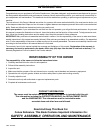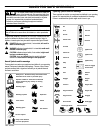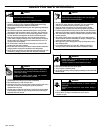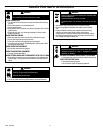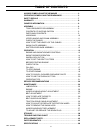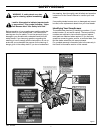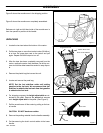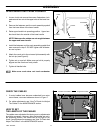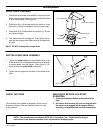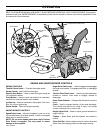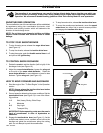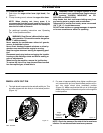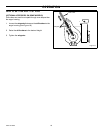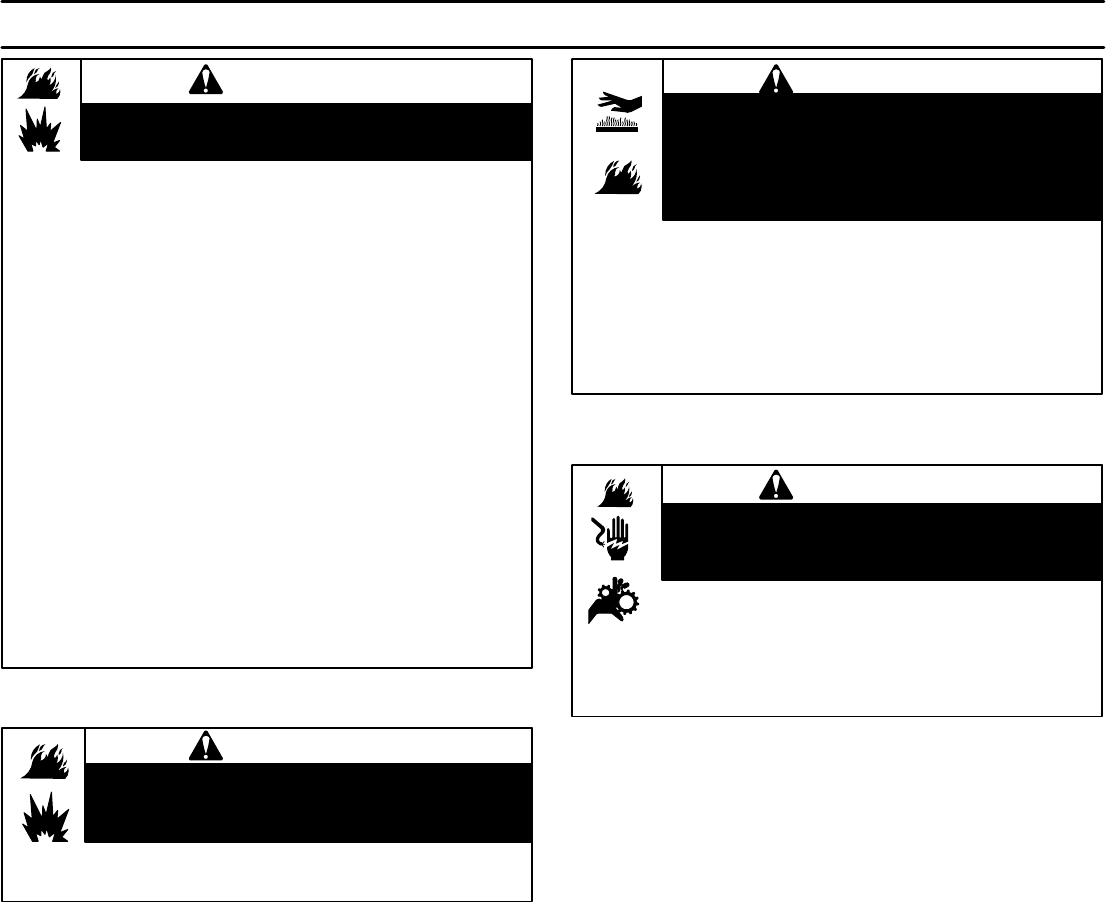
RULES FOR SAFE OPERATION
5
MTF−051056L
Gasoline and its vapors are extremely flammable and explosive.
Fire or explosion can cause severe burns or death.
WHEN ADDING FUEL
• Turn engine OFF and let engine cool at least 2 minutes before removing
gas cap.
• Fill fuel tank outdoors or in well-ventilated area.
• Do not overfill fuel tank.
• Keep gasoline away from sparks, open flames, pilot lights, heat, and other
ignition sources.
• Check fuel lines, tank, cap, and fittings frequently for cracks or leaks.
Replace if necessary.
WHEN STARTING ENGINE
• Make sure spark plug, muffler, fuel cap and air cleaner are in place.
• Do not crank engine with spark plug removed.
• If fuel spills, wait until it evaporates before starting engine.
• If engine floods, set choke to OPEN/RUN position, place throttle in FAST
and crank until engine starts.
WHEN OPERATING EQUIPMENT
• Do not choke carburetor to stop engine.
WHEN TRANSPORTING EQUIPMENT
• Transport with fuel tank EMPTY.
WHEN STORING GASOLINE OR EQUIPMENT WITH FUEL IN TANK
• Store away from furnaces, stoves, water heaters or other appliances that
have pilot light or other ignition source because they can ignite gasoline
vapors.
WARNING
Starting engine creates sparking.
Sparking can ignite nearby flammable gases.
Explosion and fire could result.
• If there is natural or LP gas leakage in area, do not start engine.
• Do not use pressurized starting fluids because vapors are flammable.
WARNING
• Allow muffler, engine cylinder and fins to cool before touching.
• Remove accumulated combustibles from muffler area and cylinder
area.
• Install and maintain in working order a spark arrester before using
equipment on forest-covered, grass-covered, brush-covered
unimproved land. The state of California requires this (Section 4442 of
the California Public Resources Code). Other states may have similar
laws. Federal laws apply on federal land.
WARNING
Running engines produce heat. Engine parts, especially muffler,
become extremely hot.
Severe thermal burns can occur on contact.
Combustible debris, such as leaves, grass, brush, etc. can catch
fire.
Unintentional sparking can result in fire or electric shock.
Unintentional start-up can result in entanglement, traumatic
amputation, or laceration.
BEFORE PERFORMING ADJUSTMENTS OR REPAIRS
• Disconnect spark plug wire and keep it away from spark plug.
WHEN TESTING FOR SPARK
• Use approved spark plug tester.
• Do not check for spark with spark plug removed.
WARNING




